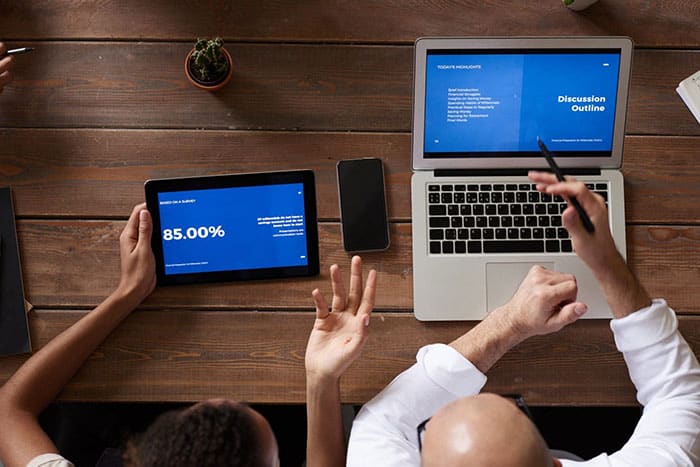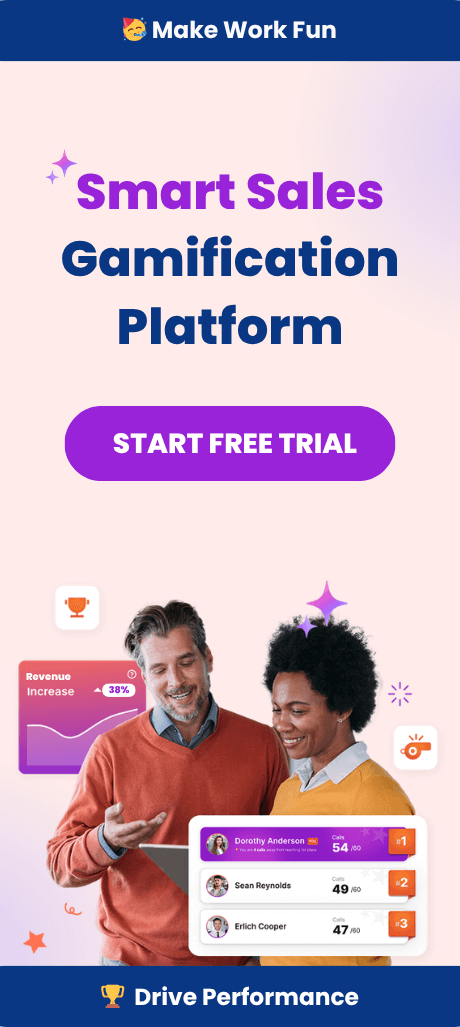Effective workplace communication is the backbone of a successful organization. Clear and efficient business communication enhances teamwork, boosts employee morale, and increases overall productivity. However, information overload can create barriers to clear and concise communication, leading to misinterpretations and reduced productivity. Many companies unknowingly make communication mistakes that lead to misunderstandings, disengagement, and lost revenue.
In today’s fast-paced, digital-first world, organizations must leverage the right tools—including artificial intelligence (AI)—to optimize communication. Spinify, a leading performance management and gamification platform, provides AI-powered coaching and engagement solutions that help teams improve workplace communication.
This article explores common workplace communication mistakes and provides real-world solutions, including how AI and Spinify can transform communication strategies.
1. Lack of Clarity in Messaging
One of the most common communication mistakes is the lack of effective communication, resulting in vague or unclear messaging. When instructions lack specificity, employees may misinterpret them, leading to errors and inefficiencies.
Solution: Use AI for Message Refinement
- AI-driven communication tools, like Grammarly Business, help refine messages by suggesting clearer phrasing and tone adjustments.
- Spinify’s AI Coaching Agent provides personalized feedback to managers, helping them craft precise and effective messages for their teams.
By leveraging AI-driven insights, leaders can ensure their messages resonate clearly and effectively with their teams.
2. Ignoring Non-Verbal Communication
Non-verbal cues such as body language, tone, and facial expressions play a critical role in communication. Developing strong communication skills is essential for accurately interpreting these non-verbal cues. However, in digital workplaces, these cues are often overlooked, leading to misunderstandings.

Solution: Use AI-Powered Sentiment Analysis
- AI tools, such as Zoom’s AI-powered engagement tracking, analyze facial expressions and vocal tone to assess employee engagement. These advanced tools can detect subtle shifts in mood and tone that might be missed in regular virtual meetings, providing a more comprehensive understanding of team dynamics.
- Spinify’s leaderboards and performance tracking offer real-time feedback, helping managers gauge employee sentiment even in remote settings. By using these tools, managers can identify potential issues early on, allowing for timely intervention and support.
By incorporating AI-driven sentiment analysis, organizations can bridge the gap in virtual communication and ensure employees remain engaged. This approach not only enhances understanding but also fosters a more inclusive and empathetic work environment, where employees feel comfortable voicing concerns and ideas. Additionally, these insights can be used to tailor communication strategies to better suit individual team members’ needs, further improving workplace communication and collaboration.
3. Information Overload
Employees are often bombarded with emails, Slack messages, and notifications, leading to communication fatigue and missed important messages. Selecting appropriate communication methods based on the issue’s urgency and complexity can enhance communication flow and reduce information overload.
Solution: Smart Notifications & Prioritization
- AI-driven assistants, like Google’s Priority Inbox, categorize messages based on urgency, allowing employees to focus on high-priority tasks without getting overwhelmed by less critical communications. This smart sorting system ensures that essential messages are addressed promptly, reducing the risk of important information slipping through the cracks.
- Spinify’s AI-powered alerts highlight key performance updates, ensuring employees focus on the most critical information. By delivering timely notifications, these alerts help team members stay on top of their responsibilities and make informed decisions quickly.
By leveraging AI-powered prioritization, companies can reduce communication overload and boost productivity. This approach not only streamlines the flow of information but also enhances employee engagement by minimizing distractions and allowing individuals to concentrate on tasks that truly matter. Additionally, prioritization tools can be customized to align with specific organizational goals, further optimizing communication efficiency and supporting a more effective work environment.
4. Lack of Feedback and Recognition
Employees disengage when they don’t receive timely feedback or recognition for their efforts. Good communication practices are essential for providing timely feedback and recognition, ensuring employees feel valued and motivated.
Solution: AI-Powered Performance Coaching
- Platforms like 15Five use AI to analyze feedback patterns and suggest areas for improvement. By identifying trends and pinpointing specific areas where employees excel or need support, these platforms help create a more targeted development plan that aligns with individual and organizational goals.
- Spinify’s AI Coaching Agent delivers real-time coaching insights, ensuring employees receive personalized performance feedback. This approach not only provides immediate guidance but also fosters a culture of continuous learning and improvement. Employees can track their progress over time, setting goals and receiving encouragement to reach their full potential.https://youtu.be/xMnsTSPay_8
By providing continuous AI-driven feedback, organizations can keep employees motivated and engaged. This not only enhances employee satisfaction but also contributes to a more dynamic and responsive workplace culture. Regular feedback loops help build trust and open communication channels, making employees feel more comfortable voicing concerns and contributing ideas. Furthermore, incorporating AI into performance coaching allows for more objective assessments, reducing potential biases and focusing on data-driven insights to guide professional growth.
5. Failure to Adapt Communication to Different Audiences
Not every employee communicates in the same way. Recognizing different communication styles is crucial to avoid a one-size-fits-all approach, which can lead to misunderstandings and disengagement.
Solution: AI-Personalized Communication
- Microsoft Teams’ AI customizes messages based on employee preferences, ensuring that each team member receives information in a manner that resonates with their unique communication style. This personalization helps to bridge the gap between diverse communication preferences, reducing the risk of misinterpretation and enhancing understanding.
- Spinify’s AI Coaching Agent tailors coaching feedback to each employee’s communication style, allowing managers to deliver feedback that is not only relevant but also more impactful. By understanding individual preferences, employees are more likely to engage with the feedback and apply it effectively in their roles.
By personalizing communication, companies can ensure messages resonate with diverse teams. This approach fosters a more inclusive work environment where employees feel understood and valued. It also enables leaders to connect with their teams on a deeper level, promoting a culture of open dialogue and collaboration. Personalized communication strategies can lead to improved employee satisfaction and retention, as team members are more likely to feel aligned with the organization’s goals and values.
6. Relying Too Much on Emails
Communication methods are crucial in choosing the best medium for urgent or complex discussions. Over-reliance on emails leads to delays and misinterpretations.
Solution: Integrated Communication Tools
- Slack’s AI-powered summarization helps employees catch up on missed discussions by providing concise summaries of long threads. This feature ensures that employees can quickly understand the context of conversations without having to sift through extensive message histories, saving valuable time and reducing the risk of misinterpretations.
- Spinify’s Slack and Microsoft Teams integrations enable real-time performance updates and engagement tracking, allowing team members to stay informed about their progress and achievements. These integrations facilitate seamless communication flow, ensuring that everyone is aligned with the organization’s goals and objectives.
By diversifying communication channels and incorporating AI-driven tools, businesses can significantly improve collaboration and responsiveness. This approach not only enhances the efficiency of communication but also supports a more dynamic and adaptable work environment. Employees can choose the most suitable communication method for their needs, whether it’s instant messaging for quick updates or video calls for more in-depth discussions. Additionally, integrated tools can help organizations better manage remote workers by providing them with the necessary resources to stay connected and engaged, ultimately leading to improved workplace communication and stronger team dynamics.
7. Not Encouraging Two-Way Communication
Communicating effectively in the workplace involves encouraging two-way communication, ensuring that employees feel heard and valued. Top-down communication without employee input creates disengagement.
Solution: AI-Enhanced Feedback Loops
- Salesforce’s AI-driven chatbot gathers real-time employee feedback, allowing organizations to quickly identify areas of concern and opportunities for improvement. By analyzing this feedback, companies can make data-driven decisions to enhance workplace communication and employee satisfaction.
- Spinify’s AI Coaching Agent offers real-time insights into employee performance and engagement. This tool not only tracks key performance indicators but also provides actionable recommendations to managers, helping them to address potential issues proactively and maintain a positive work environment.
Encouraging two-way communication fosters innovation and boosts employee morale. By implementing AI-enhanced feedback loops, organizations can create a culture where employees feel valued and heard, leading to higher levels of engagement and productivity. This approach also promotes transparency and trust within teams, as employees are more likely to share their thoughts and ideas when they know their feedback is being actively considered and acted upon. Additionally, AI-driven feedback systems can identify trends and patterns in employee sentiment, allowing leaders to tailor their communication strategies to better meet the needs of their workforce. By continuously refining these strategies, companies can ensure that their communication remains effective and aligned with organizational goals.
8. Overlooking Remote and Hybrid Communication Challenges
Remote employees often struggle with feeling disconnected from the team.
Effective internal communications are crucial in keeping remote employees connected and engaged.
Solution: AI-Driven Engagement Tools
- Zoom’s AI transcription services improve accessibility by automatically transcribing meetings, ensuring that all team members, regardless of their location or time zone, can access and review discussions at their convenience. This feature is especially beneficial for remote workers who might miss real-time meetings due to scheduling conflicts or time differences, as it allows them to catch up on important conversations and stay informed about team developments.
- Spinify’s AI-powered leaderboards and coaching keep remote teams aligned and motivated by providing real-time performance metrics and personalized coaching feedback. These tools help managers identify areas where team members excel and where they may need additional support, fostering a culture of continuous improvement and engagement. By highlighting achievements and encouraging friendly competition, these leaderboards motivate team members to strive for excellence while maintaining a sense of camaraderie and team spirit.
By leveraging AI-powered engagement tools, companies can ensure remote teams feel connected and valued. These tools not only facilitate better communication and collaboration but also help bridge the gap between in-office and remote employees, creating a more cohesive and inclusive work environment. Additionally, by using AI-driven insights, organizations can tailor their communication strategies to meet the unique needs of their remote workforce, ensuring that all employees have the resources and support they need to succeed. This approach not only enhances productivity but also boosts employee satisfaction and retention, as team members feel more engaged and integrated into the company culture, regardless of their physical location.
9. Misuse of Gamification in Communication
When done incorrectly, gamification can distract employees rather than motivate them.
Communication problems can arise from the misuse of gamification, as ineffective information sharing and misunderstandings can lead to conflicts and decreased productivity.
Solution: Data-Driven Gamification
- Spinify’s AI-driven gamification ensures leaderboards are optimized for engagement without unnecessary distractions.
Properly implemented gamification fosters healthy competition and increases productivity by transforming mundane tasks into engaging challenges. This approach not only motivates employees to achieve their goals but also encourages collaboration and team spirit. By setting clear objectives and providing immediate feedback, gamification can drive employee engagement and enhance overall performance. However, it’s crucial to balance fun with functionality to ensure that gamification aligns with organizational goals and supports business communication strategies. When used effectively, it can lead to improved communication flow, better understanding of tasks, and a more cohesive work environment.
10. Not Using Data to Improve Communication
Relying on intuition rather than data leads to inefficient communication strategies.
Solution: AI-Powered Communication Analytics
- Spinify’s analytics dashboard provides insights into employee engagement and communication effectiveness. By analyzing communication patterns, these dashboards can identify bottlenecks and areas for improvement, enabling organizations to fine-tune their communication strategies. This data-driven approach ensures that communication channels are optimized for maximum efficiency and effectiveness, reducing the risk of misunderstandings and enhancing overall productivity.
By using data-driven insights, organizations can continuously optimize workplace communication. This not only leads to better alignment between teams but also supports a culture of continuous improvement, where communication strategies are regularly evaluated and refined to meet the evolving needs of the workforce. Ultimately, embracing AI-powered communication analytics can help businesses build stronger, more connected teams that are better equipped to achieve their goals.
11. Lack of Empathy in Communication
Emotionally intelligent communication is essential for workplace harmony.
Solution: AI Sentiment Analysis
- Spinify’s AI Coaching Agent detects employee sentiment and provides tailored coaching.
By fostering empathetic communication, businesses can create a positive work environment.
Empathy in communication is not just about understanding others’ feelings but also about responding to them in a way that builds trust and respect. In the workplace, empathy can significantly improve team dynamics and employee satisfaction. AI sentiment analysis tools can help managers identify emotional cues in communication, allowing them to respond more thoughtfully and appropriately. By integrating these insights, companies can tailor their communication strategies to be more inclusive and supportive, enhancing employee engagement and reducing conflict.
12. Not Addressing Communication Gaps in Onboarding
New hires need structured and clear onboarding communication. Communication problems can arise from gaps in onboarding communication, leading to misunderstandings and decreased productivity.
Solution: AI-Driven Onboarding
- Spinify’s gamified platform keeps new employees engaged and informed from day one. This interactive approach not only makes the onboarding process more enjoyable but also helps new hires quickly acclimate to the company culture and understand their roles and responsibilities. By using gamification, companies can present information in a more engaging format, encouraging active participation and retention of knowledge.
By leveraging AI-based training, organizations can ensure seamless onboarding experiences that not only equip employees with the necessary skills and knowledge but also foster a sense of belonging and engagement from the very beginning.

This approach can lead to higher retention rates, as employees who feel supported and well-informed are more likely to remain with the company long-term. Additionally, AI-driven onboarding can help identify potential areas for improvement in the onboarding process, allowing organizations to continuously refine and enhance their approach to welcoming new team members.
13. Ignoring Cultural and Generational Differences
Miscommunication often arises from cultural and generational gaps. Business communication plays a crucial role in bridging these gaps by fostering clear and effective interactions across diverse teams.
Solution: AI Language and Tone Adjustments
- Grammarly Business’s AI helps refine messages for clarity and inclusivity.
AI-driven language tools ensure effective cross-generational communication. These tools are particularly beneficial in workplaces with diverse teams, where cultural and generational differences may impact communication styles. By adjusting language and tone, AI tools can help bridge communication gaps, ensuring that messages are not only clear but also culturally sensitive and respectful. This fosters a more inclusive work environment, where all employees feel understood and valued, regardless of their background. Furthermore, AI language tools can assist in tailoring communication to suit various audiences, enhancing engagement and reducing the risk of misinterpretation. By promoting clear and inclusive communication, organizations can improve team dynamics and collaboration, ultimately leading to a more harmonious and productive workplace.
14. Lack of Real-Time Coaching and Support
Employees benefit from instant feedback rather than delayed performance reviews. Effective communication plays a crucial role in providing real-time coaching and support, ensuring that messages are conveyed clearly and understood appropriately by the audience.
Solution: AI Coaching in Real-Time
- Spinify’s AI Coaching Agent provides instant feedback, helping employees improve performance on the go.
Real-time coaching enhances employee growth and engagement by offering immediate insights and guidance tailored to individual needs. This approach allows employees to quickly apply feedback to their tasks, leading to continuous improvement and skill development. By addressing issues as they arise, real-time coaching helps prevent small problems from escalating into larger ones, ensuring that employees remain productive and focused.
15. No Clear Communication Strategy
A lack of structured communication leads to confusion and inefficiencies. Selecting appropriate communication methods is crucial in developing a clear communication strategy.
Solution: AI-Enhanced Communication Strategies
- Spinify helps organizations create structured communication strategies with AI-powered insights. By utilizing data-driven analytics, companies can identify communication bottlenecks, streamline information flow, and ensure messages are delivered effectively across all levels of the organization. This proactive approach enables businesses to tailor their communication methods to suit the unique needs of their workforce, fostering a more cohesive and collaborative environment.
By establishing clear strategies, businesses can enhance team collaboration. A well-structured communication strategy not only supports effective information dissemination but also promotes transparency and trust within the organization. By leveraging AI-enhanced communication strategies, companies can create a more inclusive and responsive work environment where employees feel valued and empowered to contribute their ideas and feedback. This, in turn, can lead to higher levels of employee satisfaction, retention, and overall organizational success.
Conclusion
Workplace communication mistakes can have serious consequences, leading to disengaged employees, lower productivity, and missed goals. However, by leveraging AI-driven tools like Spinify’s AI Coaching Agent, real-time feedback, and smart gamification, companies can transform their communication strategies and foster a more engaged, motivated, and high-performing workforce.
💡 Ready to enhance your workplace communication? Book a demo with Spinify today and take your team’s performance to the next level! 🚀




